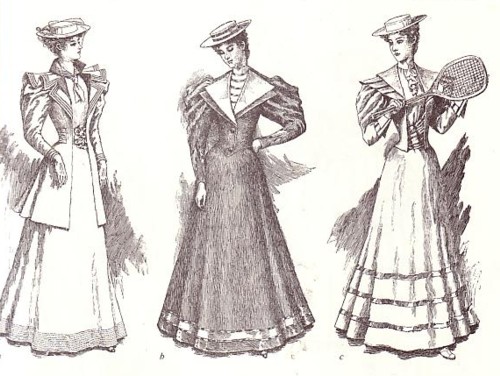
Exploring the Intriguing World of 1900s Fashion
Introduction: A Journey Back in Time
Traveling back to the turn of the 20th century unveils a fascinating era in fashion history: the 1900s. From the elegant attire of the Edwardian period to the revolutionary changes of the early 20th century, exploring 1900s fashion offers a glimpse into a world of sartorial evolution and societal transformation.
The Edwardian Elegance: Fashion in the Early 1900s
At the dawn of the 1900s, fashion was characterized by the opulent and refined styles of the Edwardian era. Women’s clothing featured high necklines, long skirts, and elaborate embellishments, reflecting the luxurious lifestyle of the upper class. Meanwhile, men favored tailored suits with structured silhouettes, exuding sophistication and status.
Revolutionary Changes: Fashion in the 1910s
As the 1910s unfolded, fashion underwent significant changes influenced by societal shifts and technological advancements. Women’s attire became more practical and streamlined, with the emergence of looser silhouettes and shorter hemlines. The outbreak of World War I also impacted fashion, leading to a more utilitarian approach and the rise of military-inspired garments.
The Rise of Haute Couture: Fashion in the 1920s
The Roaring Twenties marked a revolutionary period in fashion history, characterized by the rise of haute couture and the liberation of women’s clothing. Flappers embraced daring styles, flaunting shorter hemlines, drop-waist dresses, and embellished headbands. Men’s fashion also experienced a transformation, with the introduction of casual sportswear and the iconic Jazz Age suits.
The Great Depression: Fashion in the 1930s
The economic challenges of the Great Depression profoundly impacted fashion in the 1930s, leading to a shift towards more practical and affordable clothing. Women’s fashion favored feminine silhouettes with nipped waists and flowing skirts, while men’s suits featured wider shoulders and tapered trousers. Despite the hardships, fashion continued to evolve, reflecting the resilience and creativity of the era.
War-Time Rationing: Fashion in the 1940s
The outbreak of World War II brought about significant changes in fashion, as rationing and restrictions influenced clothing design and production. Utility clothing became prevalent, with simplified silhouettes and limited embellishments. Women’s fashion adapted to the demands of wartime, with practical dresses and separates designed for work and resilience.
The Post-War Revival: Fashion in the 1950s
The post-war period of the 1950s witnessed a resurgence of glamour and prosperity in fashion. Women embraced feminine silhouettes with full skirts and fitted bodices, epitomized by the iconic New Look silhouette introduced by Christian Dior. Men’s fashion also experienced a revival, with sharp suits and tailored separates reflecting a newfound sense of optimism and prosperity.
The Swinging Sixties: Fashion in the 1960s
The 1960s heralded a cultural revolution in fashion, characterized by the youthquake movement and the rise of mod style. Mini skirts, bold prints, and psychedelic patterns became synonymous with the swinging sixties, as women embraced a more liberated and experimental approach to clothing. Men’s fashion also underwent a transformation, with the introduction of bold colors and unconventional styles inspired by the counterculture movement.
The Decade of Disco: Fashion in the 1970s
The 1970s was a decade defined by disco fever, bohemian chic, and eclectic styles. Women’s fashion embraced flowing maxi dresses, flared trousers, and peasant blouses, reflecting a free-spirited and laid-back aesthetic. Meanwhile, men’s fashion saw the emergence of leisure suits, platform shoes, and bold patterns, as disco culture dominated the fashion scene.
The Power Dressing Era: Fashion in the 1980s
The 1980s was an era of excess and power dressing, characterized by bold silhouettes, exaggerated proportions, and vibrant colors. Women embraced shoulder pads, power suits, and statement accessories, exuding confidence and authority in the workplace. Men’s fashion also embraced bold styles, with oversized blazers, neon colors, and flashy accessories epitomizing the spirit of the decade.
Conclusion: A Tapestry of Fashion Evolution
From the opulence of the Edwardian era to the rebellious spirit of the 1960s and the excess of the 1980s, the fashion of the 1900s reflects a diverse tapestry of styles, influences, and societal changes. Each decade tells a unique story of sartorial evolution, innovation, and cultural transformation, leaving an indelible mark on the world of fashion. Read more about 1900s fashion
